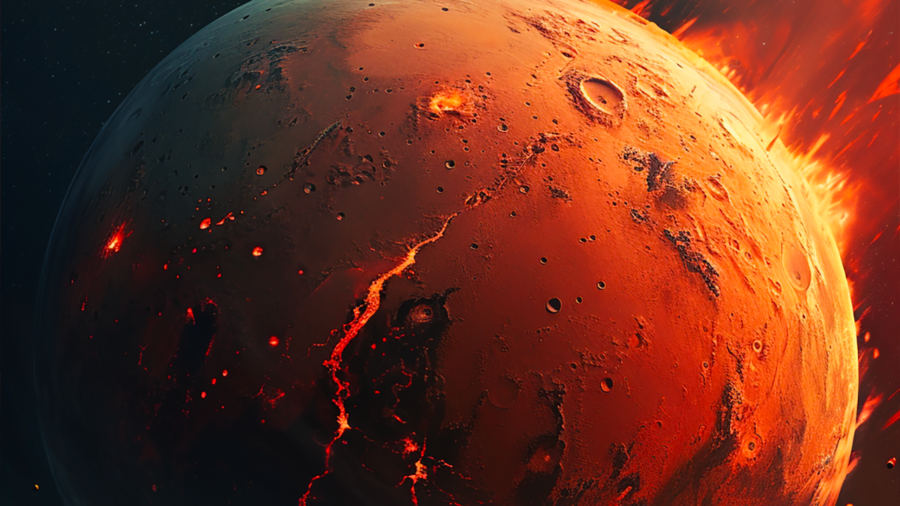Mars Volcanoes More Active Than We Imagined

A survey using advanced technology has unearthed surprising evidence of recently active Mars volcanoes, challenging the belief that the red planet is cold and lifeless. Conducted over the Elysium Planitia plain, the study reveals volcanic events that occurred within the last 120 million years. Some activity is as recent as just 1 million years ago. What’s more, scientists believe there may be volcanic activity on the planet right now.
While a million years ago may seem like an eternity to us mortal humans, it’s just a tiny blip in the big clock of universal time. Learning that Mars has active volcanoes as recent as this is a major step forward in our understanding of our planetary neighbor and shows that Mars might be more like Earth than we previously thought.
The study, led by Joana Voigt from NASA’s Jet Propulsion Laboratory and Christopher Hamilton from the University of Arizona, suggests that Mars may still have active volcanoes now. Though we haven’t seen any activity, the research utilized satellite imagery and ground-penetrating radar to explore the Martian surface. The results showed that volcanic activity may be happening under our radar today.
The Elysium Planitia, where the study was focused, displayed an intriguing landscape with young lava flows covering the surface. While we’ve known about lava flow on Mars for a while, scientists were particularly puzzled by the apparent youthfulness of these particular crimson gushes. More interesting is that the landscape on this part of Mars looks remarkably similar to some parts of Earth where volcanoes are active.

On Earth, when lava mixes with ice or liquid water, it causes steam explosions that result in distinctive geological formations. These same formations were found on Mars near the volcanoes, suggesting that similar steam explosions likely happened on our neighboring planet as well.
While no live water was found, these distinctive formations caused by steam explosions are one more piece of evidence added to a growing list that Mars either once had water or still does, hidden deep underneath its red surface. Mars’ volcanoes might be a key to finding life on Mars. On Earth, landscapes with a combination of hot geological activity and water, like hot springs, often support microbial life.
To unravel Mars’ volcanic history, researchers combined data from various instruments, including topographic maps, satellite imagery, and ground-penetrating radar. This multidimensional approach allowed them to reconstruct the 3D history of more than 40 volcanic events in the Elysium Planitia, spanning from 120 million to 1 million years ago.
Some of these volcanic eruptions were colossal, flooding vast areas with molten basalt. For instance, Rahway Valles received over 16,000 cubic kilometers of molten rock, while Marte Vallis and Athabasca Valles experienced similarly dramatic events. The study indicates that Mars, despite its current dry appearance, may have experienced catastrophic floods of groundwater triggered by the planet’s volcanoes, reminiscent of explosive eruptions on Earth.
The newfound research challenges preconceived notions about Mars, presenting it as a dynamic and potentially habitable world. It shows that Mars might still be geologically active, with volcanoes potentially spewing out lava and water and possibly even microbial life hidden somewhere deep under the planet’s surface.
Source: University of Arizona












